Thanks for the comment on the last post, Bruce, but, according to BW, progress at Stenson is as expected; the lock is due to re-open on Friday. Just to be sure, though, I‘ll give them another call tomorrow….
We’ve had a good few days, brother Andy and family and sister Sue came for Sunday lunch, then yesterday I cleared, washed, and reloaded the roof. There are a few chips in the paint that need attention before winter, I‘ll get to them now I can see them!
We set off around 10:30 this morning, pulling back to the lock landing first to top up the water tank, then taking a very slow cruise the 3 miles to Swarkestone Lock. As expected, no-one else was about.
Leaving Weston Lock
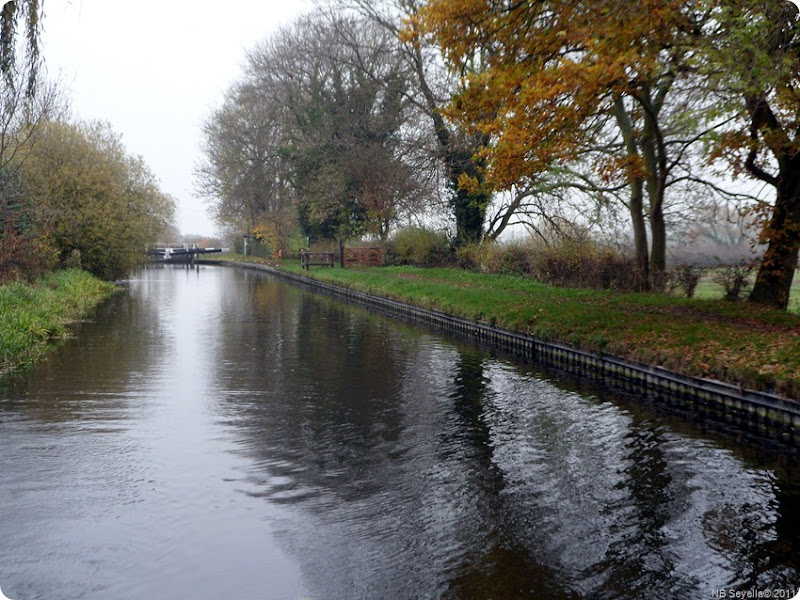
It’s been a typical autumn day, cool and misty. The leaves are turning with a vengeance now, the willow succumbing first and the oak seemingly a bit more resistant to the cooler weather.
Bare willow and Bridge 9
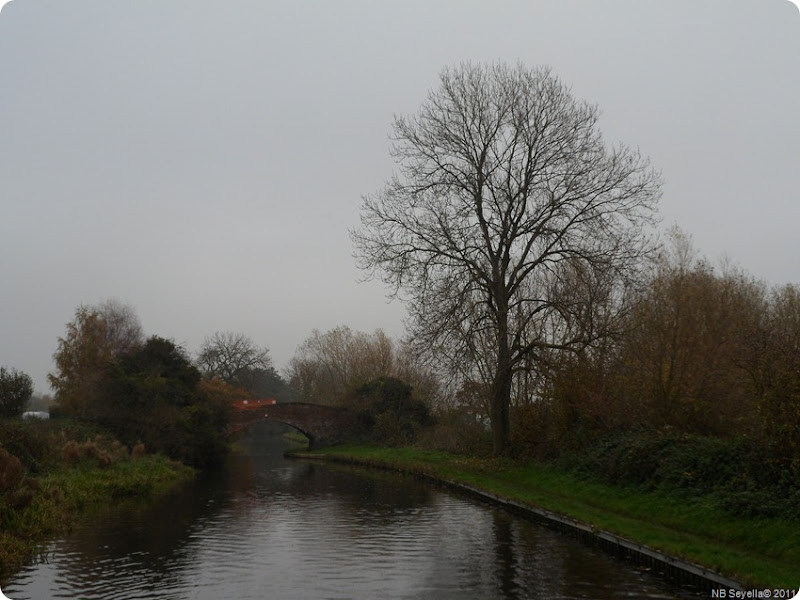
Multi-coloured oak leaves
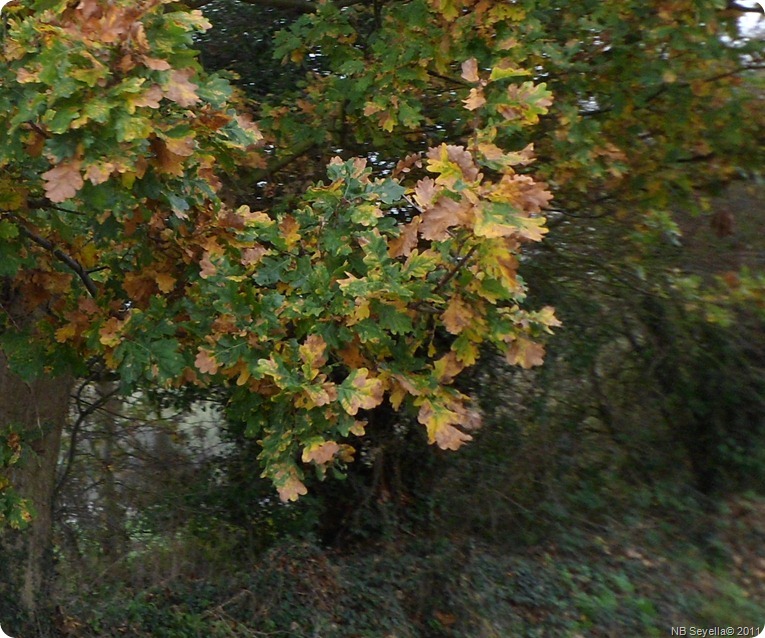
Nearing Swarkestone visible across the fields is the twin-tower facade of Bowl Alley House. Also known as The Pavilion and The Banqueting House, this latter was it’s actual use, a place to retire to after feasting and events for conversation and sweetmeats. Built by the Harpurs (a major landowning family in the area and owners of Swarkestone Hall) in 1632, it cost the princely sum of £111/12/4! The lead on the domes was extra….
Bowl Alley House
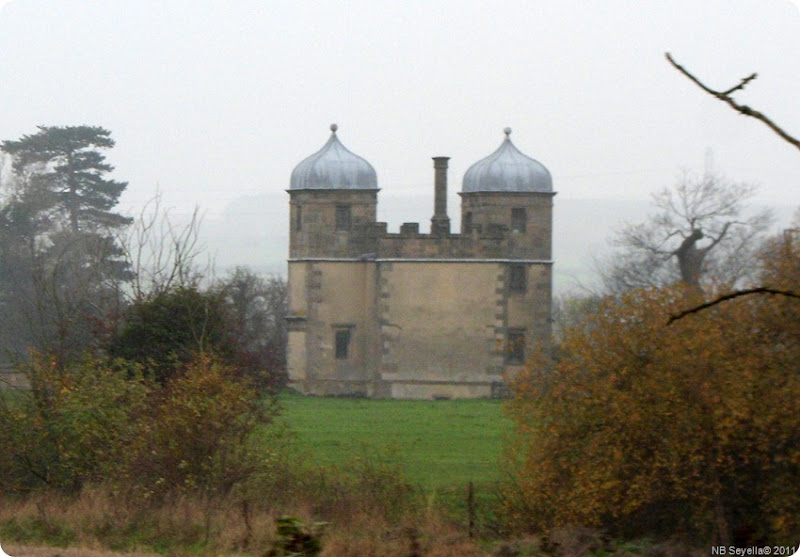
The hall is now gone, but the pavilion was preserved and has been restored, and is now a unique holiday home operated by the Landmark Trust.
Swarkestone has been an important site on the Trent since the Bronze Age. The main road from Derby to Coventry was once Lowes Lane, now merely a track which crosses the canal at Swarkestone Lock. Iron Age and Roman remains have been found locally, and the name is derived from the the name of Swerkir, a Dane who settled here in 874. There was a minor Civil War battle here in 1643, but the biggest claim to fame involves Bonnie Prince Charlie, the “Young Pretender” to the English throne.
Charles Edward Stuart had been in exile with his father James Stuart, and was the grandson of James II of England. He decided to reassert his claim to the throne in the 1745 Jacobite Rebellion. Swarkestone Bridge is the furthest south the Scottish Jacobite army managed to get, before turning back in the face of superior forces under General George Wade (no relation) and Prince William, Duke of Cumberland. The Scottish army was chased north, finally being defeated at Culloden in April 1746. The Prince escaped, and returned to exile in France 6 months later.
There has been a bridge of some sort here since the 11th century. The current road bridge dates from the late 18th century, but is built on the foundations of the 14c one which was destroyed in a flood. It’s the longest stone bridge in England, just under a mile on seventeen arches. It has Grade I listed status.
The southern section of the bridge crosses the flood plain on a causeway, originally Medieval (and considerably improved since!), leading to Stanton by Bridge.
We ascended Swarkestone Lock and moored above, alongside the access road to the BW depot and lengthman’s house.
Moored at Swarkestone
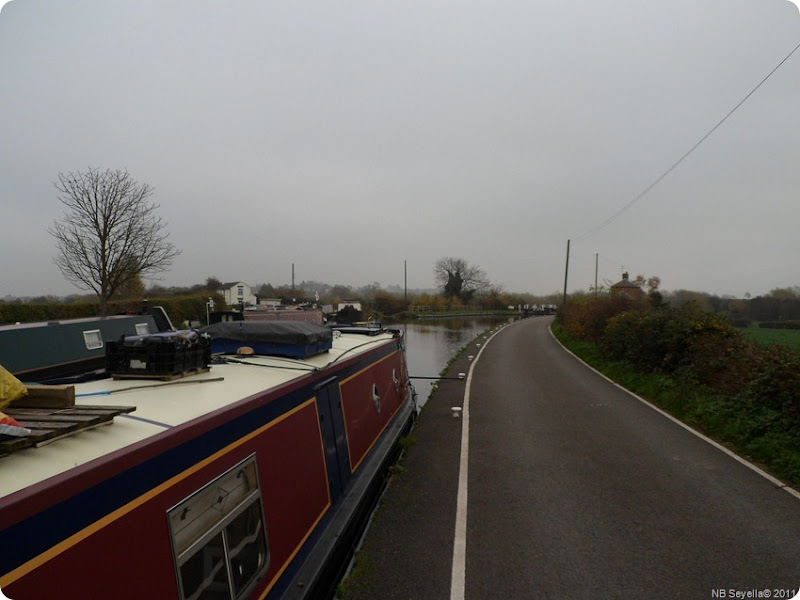
Not an ideal spot for Meg, but handy for our ¼ tonne of smokeless fuel due to arrive tomorrow….
Locks 1, miles 3
1 comment:
Hi all,
That Bowl Alley House is very similar to a building near Tixel Wide. Having read this blog I had wondered how you had got here so fast!
We have got to Gailey for the weekend. You have a few stoppages to wait for. Hope to see you perhaps in December. Chas n Ann M2L
Post a Comment